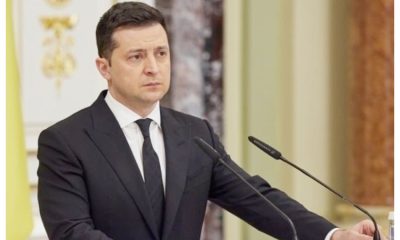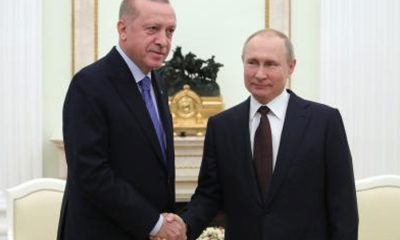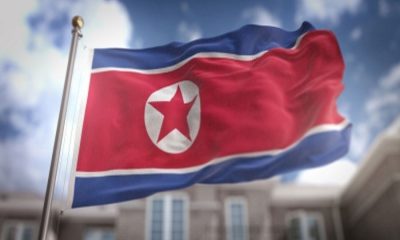Crime
Have Big Powers pushed Ukraine to Disaster?
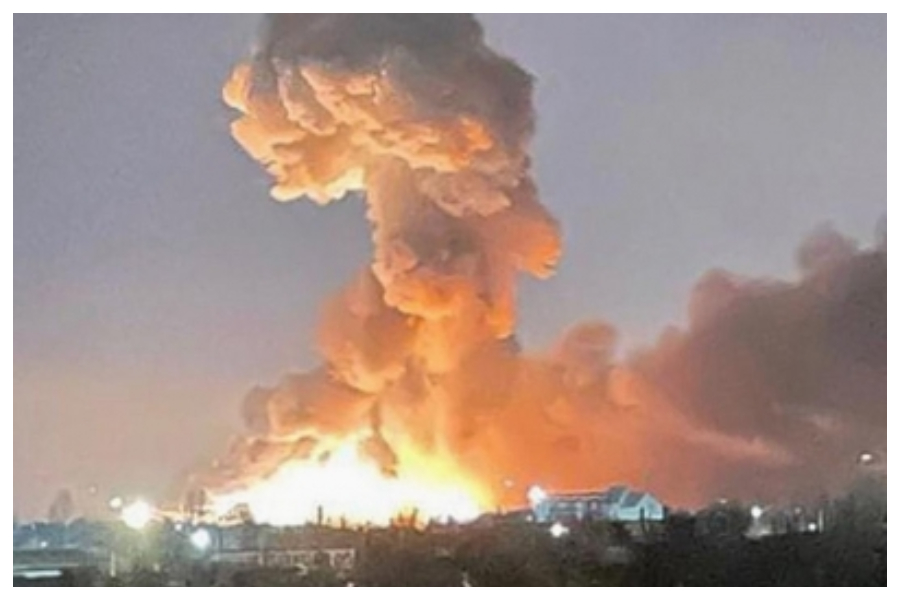
Russia has declared war on Ukraine on February 24, 2022, and is executing a plan meticulously prepared and war-games. NATO appears to have over-relied on the potency of its sanctions to deter Putin, which appears to be a major strategic error because it has not worked in the past and does not appear to be working now. Instead, it has emboldened Russian leadership’s resolve that NATO will be unable to respond to a quick offensive beyond condemnation, Ukraine’s capacity building, and sanctions on Russia.
It has pushed Ukraine to disaster, as its President’s loud demand to join NATO was neither acted upon by West, nor provided him any assurance that anyone else would do the heavy lifting or put boots on the ground in Ukraine to fight Russians, despite a massive military force imbalance in Russia’s favour.
Decoding Strategic and Military Action of Russia so far
The contours and logic of Russian plans were evident from its posturing over months, President Putin’s speeches to the nation and his demands made to Ukraine. The political aim of Russia seems to be to target Ukraine’s leadershipto give up demand of NATO membership, or else force a regime change, replacingit with a pro-Russian government not propagating NATO membership/agenda.
Strategically, the centre of gravity for the Russian offensive is the minds of Ukraine’s leadership and military to surrender to Russia with minimum militaryactions. This strategic goal cannot be realised without surrounding Kyiv, which is the key strategic objective; as a result, operations to encircle Kyiv and capture adjacent airbases have been launched. After Russia recognised the independence of the Donetsk People’s Republic and the Luhansk People’s Republic, the liberation of the Donbas region was a foregone conclusion.
The military aim is to demilitarise Ukrainian military to ensure that Ukraine cannot be used as a springboard by NATO to threaten the security of Russia and isolate Kyiv to facilitate regime change without military interference. To shape the battlefield, Russian military postured three sides of Ukraine with massive combat superiority, used forces in Belarus to invade from the North to reach Kyiv via shortest route, used its Black Sea fleet and Crimea to blockade Ukraine from South, and forces in Donbas region to invade from east and some forces from northeast to expedite consolidation.
The military operations were preceded by cyber-attacks and information warfare. Military operations were launched in a well-planned and professional manner under the banner of ‘Special Operations,’ beginning with air and missile strikes to neutralise air defence capability, air assets to achieve air superiority, and pulverise military targets, claiming to have destroyed over 70 military targets and installations, including 11 airfields in Ukraine, before ground elements marched in, adding conventional superiority to upgrade its hybrid war.
NATO’s Response and Future Options
President Biden’s address on February 22, and statements of other western leaders, clearly indicated that NATO is not going to have boots on ground in Ukraine and will depend on financial sanctions and material support to Ukraine as response to Russian aggression.
This weakness emboldened Russia to seize opportunity for offensive into Ukraine with minimum military cost, so far. NATO is still unclear about further responses, as the Russian offensive is already underway; hence time for any possible military action by NATO is already over. NATO, therefore is only salvaging its own security by strengthening NATO countries bordering Ukraine/Russia to prevent any possibility of Russian adventurism into any of the NATO countries, leaving Ukraine to its fate, as it’s not a member of NATO as yet.
Likely Russian Action Ahead
Russia will try to achieve its strategic objectives as fast as possible and move out of Ukraine to minimise its cost. It will avoid fighting in built up areas, as it will prolong the invasion and may not remain as an occupational force to avoid backlash from a segment of hostile population turning into insurgency against it.
It will therefore try to maximise pressure on Ukraine by all instruments of power to submit to regime change or force it at the earliest and de-escalate. Notwithstanding what Russia wants, the resolve of Ukrainian military and leadership will determine the timeframe and escalation dynamics and the support of NATO to refuel resistance will determine the staying power. Russia is unlikely to make the mistake of annexing Ukraine, as it does not make sense in strategic cost benefit analysis. To build pressure for Ukraine to surrender, Russia may also take over some key strategic installations, till its strategic aims are achieved. It’s a harsh punishment for Ukraine’s uncomfortable geopolitical location and leadership’s desire to join NATO, which has thrust it into the centre of a “Big Power Contestation” that is going to be a tragedy for its people, in all contingencies.
Indian Response
The first priority for India should be to evacuate its own students and diaspora.It can push for diplomatic solutions and peaceful resolutions, as well as measures to reduce temperatures, but it should avoid taking sides because it has good connections with all of the opposing powers. While each country’s sovereignty must be maintained, both sides have rejected it when it has served their interests, as in the Iraq war, Crimea and Afghanistan.
India needs to factor the weak western response to Ukraine crisis in its strategic calculations, as it can embolden other authoritative powers like China to take similar actions in Indo-Pacific region.
(Major General S.B. Asthana is a strategic and security analyst, a veteran Infantry General. He is the Chief Instructor, United Service Institution of India. The views expressed are personal)
Crime
Thane NDPS Wing Busts Drug Racket; Over 2.2 Kg Hashish Worth ₹1.10 Crore Seized In Mumbra, 1 Accused Arrested
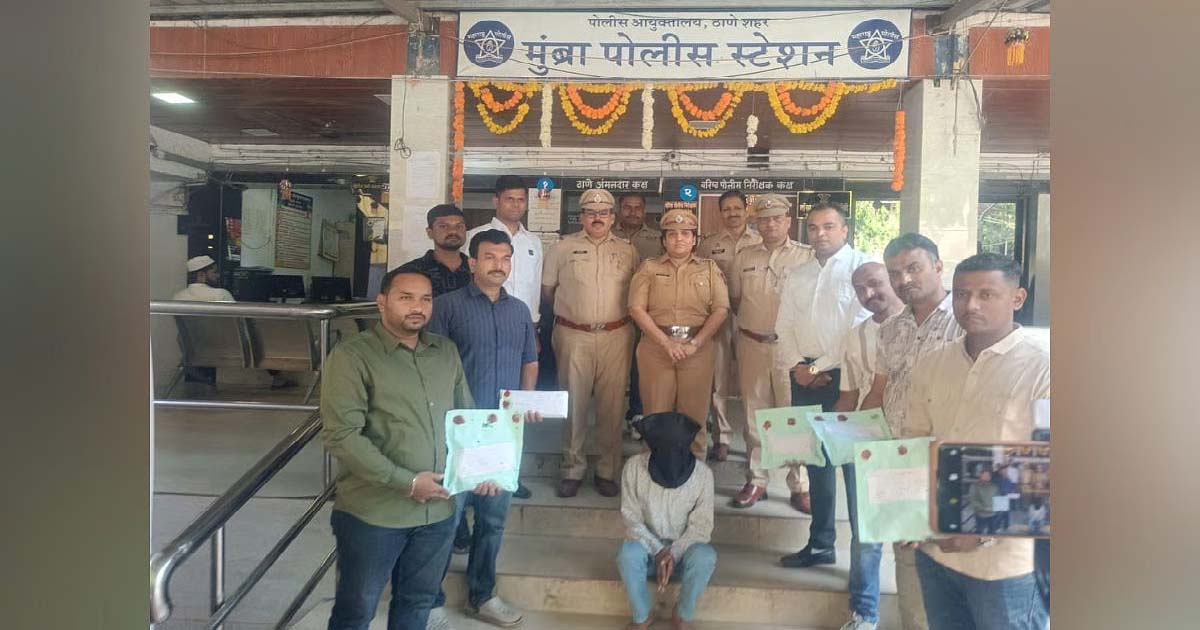
Thane, Dec 06: Thane City’s NDPS branch has achieved a major success. Under an on-ground operation, the police have exposed an active gang selling narcotic substances. In this action, the police have recovered approximately 02 kg 201 grams of hashish (charas), the market value of which is estimated to be one crore ten lakh sixty-five thousand rupees.
This operation was led by Senior Police Inspector Nitin Shinde. His team included officers and personnel from the crime branch, who carried out this action based on secret information.
Police had received information that some individuals were selling hashish and other intoxicating substances in the Mumbra area. Following this, the team laid a trap, cordoned off, and caught the suspect in the Bandewadi area. A large quantity of hashish was recovered from his possession upon search.
The suspected accused has been identified as Moin Khan, alias Hasrat Ali Siddiqui. Preliminary interrogation revealed that he used to illegally procure hashish from Jammu and Kashmir and sell it in Thane, Mumbai, and surrounding areas. The accused already has several serious crimes registered against him.
In this regard, Mumbra Police has registered a case under NDPS Act 20(a)(i)(b), 29, and further investigation is underway. The police are also trying to find out who else is involved in this network and how far this hashish supply chain extends.
Crime
Palghar: Vasai-Virar Police Nab Gang Stealing Mobile Tower Batteries; ₹6 Lakh Worth Goods Recovered
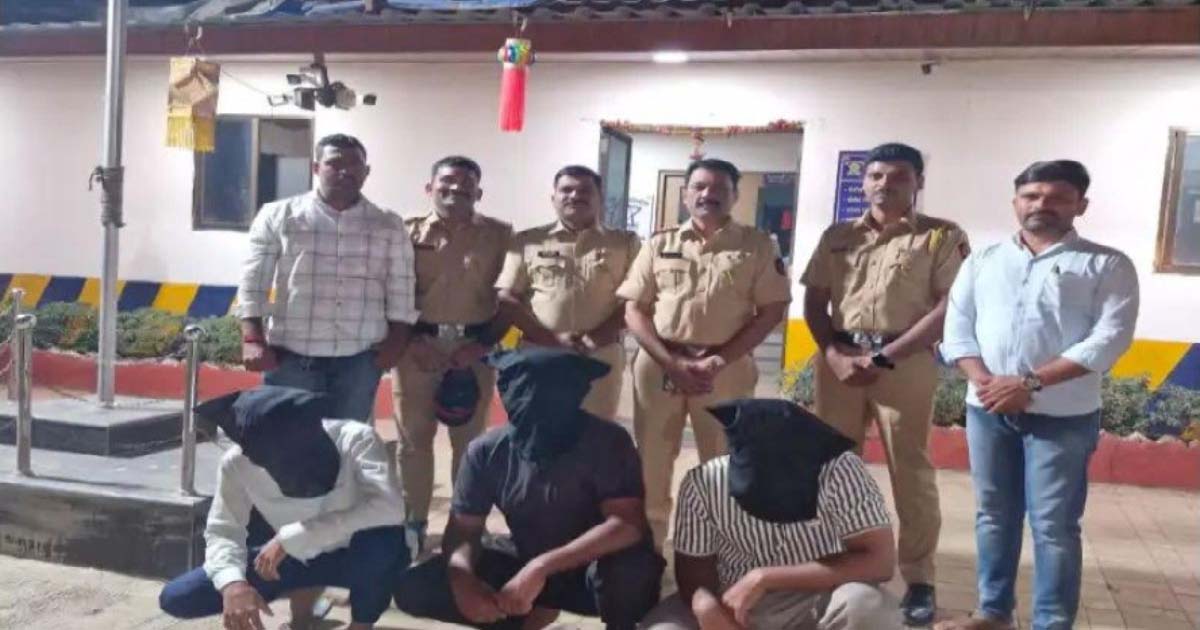
Vasai: A gang specializing in stealing mobile tower batteries has become active in the Vasai-Virar region. The Crime Detection Branch team of the Pelhar Police has successfully arrested members of this gang. Stolen goods worth ₹6 lakhs have been confiscated from them.
While incidents of house burglaries, mobile thefts, vehicle thefts, and chain snatching are occurring in Vasai-Virar, the area is now seeing cases of theft of mobile tower batteries installed for networking purposes.
Recently, twenty-four batteries belonging to the Indus Company’s mobile phone tower, valued at ₹50,000, were stolen by unknown thieves from the Arshad Compound area within the jurisdiction of the Pelhar Police Station. A case was filed at the police station regarding this incident.
Taking the seriousness of the crime into account, Senior Police Inspector Sachin Kamble instructed the Crime Detection Branch team to investigate the matter.
Accordingly, the detection team, led by Assistant Police Inspector Ramesh Waghchaure, Police Sub-Inspector Tukaram Bhople, and their team, started the investigation. It was discovered that a pickup Bolero vehicle was being used for the crimes and that the accused were employed at ARC Company (related to mobile phone towers).
Police tracked down and arrested three individuals: Aurangzeb Sarwar Ansari (19), Parvez Ghulam Rasul Shah (24), and Rafiq Aminsab Sheikh (38). Police reported seizing property worth ₹6 lakh 12 thousand from them.
The operation was conducted by the team comprising Senior Police Inspector Sachin Kamble, Police Inspector (Crime) Shivaji Patil, Crime Detection Team Assistant Police Inspector Ramesh Waghchaure, Police Sub-Inspector Tukaram Bhople, Faujdar Yogesh Deshmukh, Police Constables Tanaji Chavan, Valmik Patil, Abhijit Nevare, Ravi Wankhede, Ashok Parjane, Anil Waghmare, Wasim Sheikh, Amol Masse, and others.
Crime
One killed, five injured in Trinamool factional clash in Birbhum

Kolkata, Dec 6: A Trinamool Congress leader was killed, and five others were seriously injured in a violent clash between two factions of the ruling party in West Bengal’s Birbhum district, police said on Saturday.
The incident occurred in the Nanoor area of Birbhum district late on Friday night. The deceased Trinamool leader, who was beaten to death, has been identified as Rashbehari Sardar alias Dodan (50).
According to police, the deceased is known to be a follower of Trinamool Birbhum Zilla Parishad president Faizul Haque alias Kajal Shaikh. The injured were taken to Mangalkot Block Hospital in East Burdwan district. The body of the deceased Trinamool leader has been taken to Mangalkot Sub-divisional Hospital for post-mortem examination.
The clash broke out while villagers were gathered at the Natmandir in Patichhara village in Nanoor during Nabanna festivities. As the group was chatting, another group allegedly launched an unprovoked assault, leading to the fatal attack.
Those who carried out the attack are known to be followers of former Zilla Parishad corporator Abdul Karim Khan, who is close to Trinamool Congress strongman and former Birbhum district president Anubrata Mondal.
The Trinamool factional conflict ahead of the upcoming 2026 state Assembly elections is a matter of concern for the party leadership, sources in the Trinamool Congress said.
Following the incident, there has been widespread tension in the area. A large police force, including a combat force, has been patrolling the villages to ease the tension. Locals alleged that the death was due to Trinamool factional conflict. However, no top leader of the Birbhum district Trinamool Congress has officially spoken about the incident so far.
“One person was killed, and five others were injured in a clash last night. The injured are being treated at a hospital. Some of them have serious head injuries. An investigation has started. Extensive patrolling is being conducted to prevent any further escalation,” said a senior officer of the Birbhum district police.
-

 Crime3 years ago
Crime3 years agoClass 10 student jumps to death in Jaipur
-

 Maharashtra1 year ago
Maharashtra1 year agoMumbai Local Train Update: Central Railway’s New Timetable Comes Into Effect; Check Full List Of Revised Timings & Stations
-

 Maharashtra1 year ago
Maharashtra1 year agoMumbai To Go Toll-Free Tonight! Maharashtra Govt Announces Complete Toll Waiver For Light Motor Vehicles At All 5 Entry Points Of City
-

 Maharashtra1 year ago
Maharashtra1 year agoFalse photo of Imtiaz Jaleel’s rally, exposing the fooling conspiracy
-

 National News1 year ago
National News1 year agoMinistry of Railways rolls out Special Drive 4.0 with focus on digitisation, cleanliness, inclusiveness and grievance redressal
-

 Maharashtra1 year ago
Maharashtra1 year agoMaharashtra Elections 2024: Mumbai Metro & BEST Services Extended Till Midnight On Voting Day
-

 National News1 year ago
National News1 year agoJ&K: 4 Jawans Killed, 28 Injured After Bus Carrying BSF Personnel For Poll Duty Falls Into Gorge In Budgam; Terrifying Visuals Surface
-

 Crime1 year ago
Crime1 year agoBaba Siddique Murder: Mumbai Police Unable To Get Lawrence Bishnoi Custody Due To Home Ministry Order, Says Report



